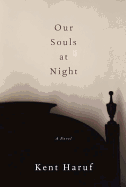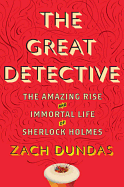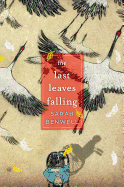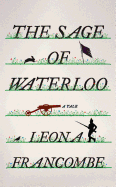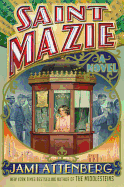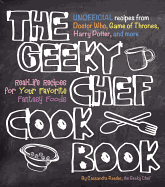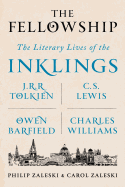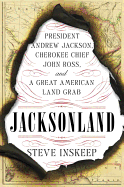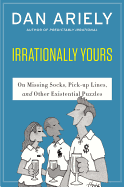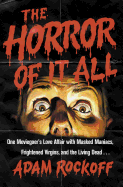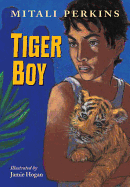Tuesday, June 2, 2015
Father's Day is soon. To save you last-minute gift shopping, we offer a suggestion--the sophisticated, thrilling espionage novels by former CIA officer Jason Matthews: Red Sparrow (Scribner, paperback) and Palace of Treason (Scribner, hardcover), wherein he heats up the Cold War with sparring, skullduggery and passion between Nathaniel Nash, a young CIA officer, and Dominika Egorova, a Russian intelligence officer. Did you think the Cold War was over? Not so, says Matthews:
 |
|
| Jason Matthews | |
"I'll quote Vladimir Putin himself who said, 'Russia never lost the Cold War... because it never ended.' In the summer of 2010, eleven Russian deep-cover intelligence officers were arrested by the FBI. Some of them had lived in the U.S.--as Americans, maybe your neighbors--for a decade, trying to develop access to secrets. Six months ago, a Russian banker was arrested for trying to infiltrate the NYSE to chart the high-volume electronic transfer network. It was probably contingency casing for a future cyber-attack. [Espionage] hasn't changed in 2,000 years. The new Cold War is humming along nicely."
Matthews has a wicked wit, unexpected in a spy thriller. He looks "into a world a lot of people don't know exists. There are a lot of spy novels, but few authors have actually lived the Life. Simply put, espionage is the process of finding a human (foreign) source, recruiting them to spy for you, and stealing secrets undetectably. More than anything, that process involves human interaction, assessing motivations, and exploiting vulnerabilities. A sly sense of humor is one of the attributes I found helpful as I did this work."
Matthews adds a surprising twist to the genre: recipes. "I had always admired authors who wrote passionately about food in their novels. Len Deighton is a good example. I thought it would be different (and maybe a little provocative) to include an elliptical recipe at the end of each chapter, many of which I have tried myself. Blending descriptions of interesting foreign food into the plot just takes a little planning." Try the Imam Biyaldi (stuffed eggplant). Delectable. --Marilyn Dahl, editor, Shelf Awareness for Readers
Our Souls at Night
by Kent Haruf
Kent Haruf's final novel begins with a startling proposition: a 70-year-old widow approaches a widower who lives down the street in the small town of Holt, Colo., and asks whether he would "consider coming to my house sometimes to sleep with me." Though it's hardly a subtle opening, Haruf's not looking to shock or titillate. Instead, in a novel that shares with its predecessors Plainsong, Eventide and Benediction not only its setting, but also a meditative mood and acute sensitivity to character, Haruf has simply and effectively let us know we are in the hands of a master storyteller.
In the late-night conversations that ensue, Louis Waters and Addie Moore quietly exchange the stories of losses and regrets that have marred their lives. And yet, as Haruf portrays them here, they are good and generous people who understand why, in spite of these tragedies and disappointments, they must persevere.
Haruf's ability to evoke the people and atmosphere of Colorado's High Plains in a few well-chosen words of description or a brief scene remains undiminished. And the resolution of the novel's plot, with the pain it inflicts on characters readers have come to care about deeply, has all the hallmarks of emotional truth.
One has a sense reading this novel that, had he lived, Kent Haruf could have drawn from an inexhaustible well of material to continue producing beautiful Holt novels. That there will be no more enhances our appreciation of his talent and our gratitude for the gift of these unforgettable stories. --Harvey Freedenberg, attorney and freelance reviewer
Discover: The story of a man and woman whose companionship provides a bulwark against loss in old age.
The Sage of Waterloo
by Leona Francombe
In a debut filled with history and whimsy, Leona Francombe retells the Battle of Waterloo through the lore and bedtime stories of a modern-day family living on the battle site at Hougoumont Farm. This clan is set apart from most historians by one notable factor--they are rabbits.
Unlike most of his twitchy-nosed relatives in the Hougoumont hutch, William has white fur. Despite his appearance, William never feels out of place among the other rabbits. Like them, he loves to hear stories from his wise grandmother, Old Lavender, matriarch of the warren, who acts as repository for the rabbits' knowledge of the great battle. She divides her time between silent contemplation, seeming to exist between the physical world and a spirit realm the others cannot join, and reminding her progeny of details from the long-ago battle. While her Waterloo retellings are for the entire hutch, William is her special protégé, and she encourages him to stretch his senses toward the echoes of the past and the ghosts of war.
Although the narrative occasionally veers into territory as charming as that of a children's story, such as William's friendship with a magpie, Francombe never loses the thread of examining the profound impact of Waterloo. She also does not miss the opportunity to point out how blithely humans sip coffee on the ground where thousands once died in bloody combat. Part historical chronicle, part adventure story, Francombe's unconventional debut hops along in crowd-pleasing fashion. --Jaclyn Fulwood, blogger at Infinite Reads
Discover: The Battle of Waterloo as narrated by a rabbit living on the farm where the deciding conflict occurred.
Saint Mazie
by Jami Attenberg
Saint Mazie by Jami Attenberg (The Middlesteins) brings to life a true historical figure--movie theater proprietress Mazie Phillips--as a fully realized, full-color, unlikely hero.
They called her Queen of the Bowery. She was bottle-blonde, busty, husky-voiced and crude; she was a self-described good-time girl with a gruff manner, partial to men and drink. But she was also a humanitarian, though she would never have admitted it. Attenberg's inspired story takes the form of a historian's fictional collection of material: entries from Mazie's diary, excerpts from a draft of her unpublished autobiography and interviews with descendants, acquaintances and local experts on New York City's past.
Mazie begins her diary on her 10th birthday, in 1907. She is new to New York City; her older sister, Rosie, has rescued her and the youngest, Jeanie, from domestic violence in Boston. The three sisters form an odd but lasting household with Rosie's husband, Louis, beloved of all three. From this day forward, Mazie remains in the city, drinking through Prohibition, assisting the wounded at the Wall Street bombing in 1920, and pinching pennies to help her neighbors through the aftermath of the 1929 crash.
Saint Mazie's structure establishes an evocative tone of both ancient history and immediacy. Mazie's love affairs and friendships are wrought with sensitivity and nuance; Nadine, the barely-named researcher behind the story, surfaces with rare, delightful hints to her own personality and motivations. Mazie's life is compelling, heartrending and irresistibly paced, but it is Attenberg's subtle storytelling decisions that make this novel unforgettable. --Julia Jenkins, librarian and blogger at pagesofjulia
Discover: The fictional portrait of a real-life, rough-edged, hard-drinking "Mother Teresa" on New York City's tough streets in the early 20th century.
Food & Wine
The Geeky Chef: Real Life Recipes for Your Favorite Fantasy Foods--Unofficial Recipes from Doctor Who, Game of Thrones, Harry Potter and More
by Cassandra Reeder
Video gamer, lifetime geek and wickedly brilliant home cook Cassandra Reeder is the chief architect behind the Geeky Chef blog. Her obsession with science fiction and fantasy's food began while she played the Legend of Zelda. She was inspired by ramen and cereal fatigue to create Yeto's Superb Soup, a thick and hearty broth of fish, pumpkin and goat cheese. This led her to explore and dissect the food and ingredients in science fiction and fantasy. The Geeky Chef is a fun-filled compilation of more than 60 recipes culled from movies, television shows, video games and books.
Reeder includes humorously descriptive and replicable recipes for Red Potion (Legend of Zelda, Minecraft and World of Warcraft), potent Romulan Ale (a 151-proof rum stunner inspired by Star Trek), Butter Beer (Harry Potter) and Mushroom Cakes (Super Mario Bros.). She reimagines lembas (Lord of the Rings) as a floral and citrusy bar, "soft, lightly sweet and very delicate so it's somewhat of a surprise when you start to feel like you just ate Thanksgiving dinner." Reeder's vision of lamb stew with plums (The Hunger Games) offers the "perfect meal after a long day of terror and fighting for your life." Under desserts, chocolate salty balls (South Park) and old school Turkish Delight (Narnia) are among some of the more memorable creations.
Reeder's recipes are personal and delivered with a wink. "As a little girl I always expected that one day adventure would happen," she writes. Indeed, Reeder's kitchen wizardry will inspire many Jedi, dragon riders and time travelers to boldly go... to the kitchen. --Nancy Powell, freelance writer and technical consultant
Discover: Science fiction and fantasy's best dishes made real by diehard fan and geeky chef Cassandra Reeder.
Biography & Memoir
The Fellowship: The Literary Lives of the Inklings: J.R.R. Tolkien, C.S. Lewis, Owen Barfield, and Charles Williams
by Philip Zaleski and Carol Zaleski
They were a group of precocious, Christian professors at Oxford in the 1930s who called themselves the Inklings. Its members had "nostalgia for things medieval and archaic," and they met in their rooms or a local pub to discuss literature, philosophy and to read aloud from works in progress. Their impact on modern literature was immense, and in the magisterial The Fellowship: The Literary Lives of the Inklings, Philip and Carol Zaleski (Prayer: A History) show in exquisite detail how these young writers evolved, influenced each other and went on to write some of the most popular books of the 20th century.
The four main Inklings were J.R.R. Tolkien, C.S. Lewis, Owen Barfield and Charles Williams. The group's "great hope was to restore Western culture to its religious roots, to unleash the powers of the imagination." Millions of readers know Tolkien's work; shortly after joining the Inklings in 1930, he wrote The Hobbit. C.S. Lewis spurred a Christian awakening and caused heated discussions as he read from what would become The Screwtape Letters. Charles Williams became a regular member of the group when he arrived from London, and was editor of Oxford University Press. Owen Barfield was the least known, but his book Poetic Diction made a strong impression on Tolkien.
The Zaleskis note that feminist critic Germaine Greer feared Tolkien would become "the most influential writer of the twentieth century." But as the authors beautifully demonstrate in this virtuoso book, the Inklings were instrumental in a "revitalization of Christian intellectual and imaginative life" while showing everyone the importance of a good story. --Tom Lavoie, former publisher
Discover: An all-encompassing, impeccably researched and beautifully written history of one of the most important writing groups of all time.
History
Jacksonland: President Andrew Jackson, Cherokee Chief John Ross and a Great American Land Grab
by Steve Inskeep
Steve Inskeep's second book, Jacksonland: President Andrew Jackson, Cherokee Chief John Ross and a Great American Land Grab, focuses on the relationship between the leadership of the Cherokee tribes and the U.S. government under President Andrew Jackson that led to the Trail of Tears. NPR anchor Inskeep (Instant City) depicts two men from opposing cultural poles as political adversaries, forcing each other to make unpopular decisions.
In the 1830s, the United States was still defining itself. The loudest voices were often the southern states that surrounded Native American regions. As the U.S. grew, the Cherokee Nation, led by Chief John Ross, responded by establishing its own representative government in order to make treaties more transparent and democratic. But Inskeep shows that Ross's plan created rifts within both the Cherokee Nation and the U.S. government.
Jackson and Ross pushed the ethical boundaries of their own constitutions for what they believed was the good of their people. While Ross struggled inside the Cherokee Nation to maintain a unified government, Jackson fought in the halls of Washington to draw divisive legislation favoring the southern states in treaties regarding Cherokee land. Jackson manipulated Ross's government into ever more land concessions. The harder Ross fought, the less his people trusted him, while the manipulative Jackson became more and more a political rogue.
The collective American consciousness has since come to consider the Cherokees as victims of the United States' inevitable expansion. But Inskeep shows that both nations were instrumental in shaping the other. --Josh Potter
Discover: A new angle on Andrew Jackson and the treatment of the Cherokees by one of journalism's most trusted and experienced storytellers.
Essays & Criticism
The Great Detective: The Amazing Rise and Immortal Life of Sherlock Holmes
by Zach Dundas
More than 120 years after his debut in A Study in Scarlet, Sherlock Holmes is a permanent cultural fixture: archetypal literary hero, perennial movie and television star (most recently in Cumberbatchian and Millerian form). With or without deerstalker hat and pipe--but always with matchless observational skills and a Dr. Watson at his elbow--Holmes is everywhere, and he's never been more popular. Journalist Zach Dundas, a longtime Holmes fanatic, takes a deep dive into the Sherlockian universe in his second book, The Great Detective.
Dundas (The Renegade Sportsman) weaves fascinating parallel histories of Holmes as literary creation, Holmes as broader cultural phenomenon, and the character's larger-than-life creator, Sir Arthur Conan Doyle. Dundas traces the evolution of the Sherlock canon and its offshoots, from serialized short stories to novels to film and television--and eventually to fanfiction, parody and pastiche. He also chronicles his own past and present forays into Sherlockiana, attending fan conventions and dragging his wife and son to explore fog-draped Dartmoor (setting of The Hound of the Baskervilles). Along the way, he muses on the traits that make Holmes at once a man of his time and an infinitely adaptable character.
Calling the Holmesian myth "the ultimate Lego set for imaginative minds," Dundas explores ways in which writers, actors and fans have followed "the impulse to re-create, remix, remodel, subvert, and generally tinker with Sherlock Holmes." Incisive, well-informed and slyly witty (like Holmes himself), Dundas's book provides entertaining and irrefutable evidence that the game is still--and is likely to remain--afoot. --Katie Noah Gibson, blogger at Cakes, Tea and Dreams
Discover: A rollicking, informative history of the meteoric rise and enduring appeal of Sherlock Holmes.
Psychology & Self-Help
Irrationally Yours: On Missing Socks, Pickup Lines and Other Existential Puzzles
by Dan Ariely, illus. by William Haefeli
In this astute collection of insights into the human condition, behavioral economist Dan Ariely (Predictably Irrational) shares questions originating from his Wall Street Journal advice column, "Ask Ariely." Using a scientific approach, he offers suggestions to societal inquiries such as, "What's the best way to get people to stop smoking?" He provides logical, dispassionate opinions about emotional situations--"My wife and I are... debating whether or not to have kids. Any advice?"--and even tackles issues as lofty as whether free will exists.
Ariely often adds a humorous or sarcastic spin to his responses. When explaining how best to ensure that Americans are financially prepared for retirement, he suggests either saving money at a young age or getting people to die young: "By allowing citizens to smoke. By subsidizing sugary and fatty foods. By limiting access to preventative health care, etc.... it seems like we're already doing the most we can on this front." But his shrewd advice and observations can also be delivered with genuine earnestness. Spelling out the lesson he hopes readers take away from a response, Ariely says, "Direct contact with other people... causes us to feel, empathize, and act with more care and compassion. And the big question is how to get our politicians, bankers, CEOs... [to] feel the consequences of their decisions and actions."
Because of its format, Irrationally Yours lends itself perfectly to short reading sessions. However, the wide spectrum of topics and Ariely's unpredictable responses makes each page an alluring gem, so readers may have difficulty stopping, but they certainly won't have trouble finding nuggets of wisdom to take away. --Jen Forbus of Jen's Book Thoughts
Discover: A Wall Street Journal advice columnist uses social science to respond to questions people have about their experiences, challenges and decisions.
Travel Literature
Skyfaring: A Journey with a Pilot
by Mark Vanhoenacker
Mark Vanhoenacker always wanted to be a pilot. After a few years working in the business world, he decided that he would fulfill his childhood dream. He went to flight school and then began piloting a British Airways Airbus before moving up to the Boeing 747. Skyfaring is his maiden effort as a writer, and if he flies as well as he writes, he's a darn good pilot.
His book is divided into nine sections, each a short essay, beginning with "Lift" and ending with "Return." Taking off is his favorite part of a flight. As the lights begin alternating to indicate the approaching end of the runway, "four rivers of power" create nearly a quarter of a million pounds of thrust as they leave land behind and enter the sky. Soon they are traveling at about one mile every seven seconds.
In "Place," he ruminates over the concept of place-lag: "our jet-age displacements over every kind of distance" result in "the inability of our deep old sense of place to keep up with our airplanes." In "Machine," he writes about regaining control of the plane after the autopilot has been shut off. To turn the control column and "watch the horizon tilt like a two-dimensional game board... lifting, banking in response to my hands, is a feeling like nothing else."
Vanhoenacker demystifies the complexities of flight and engages readers with his wit, knowledge and excitement for his profession--a modern farer of the skies. He is the perfect guide, and his book is sure to be a bestseller in airport bookstores all over the world. --Tom Lavoie, former publisher
Discover: An insider's tour of what it's like to fly, as told by the pilot of a huge airplane.
Performing Arts
The Horror of It All: One Moviegoer's Love Affair with Masked Maniacs, Frightened Virgins, and the Living Dead...
by Adam Rockoff
Adam Rockoff knows and loves horror films. He wrote a reference guide to the genre (Going to Pieces: The Rise and Fall of the Slasher Film, 1978–1986, which became a 2006 feature-length documentary), and several produced screenplays (including the 2010 remake of I Spit on Your Grave). Rockoff's autobiographical second book, The Horror of It All, recalls that his generation was the first to have immediate and repeated access to any film thanks to the explosion of videotape movie rental market in the 1980s. His parents owned a local video store, so his ability to acquire popular and obscure horror films was virtually limitless.
A self-confessed "fear junkie," Rockoff writes, "Every new horror film became a test, a game to see how much fear I could handle.... And the more films I watched, the more I fell in love with them." Rockoff's unbridled enthusiasm and encyclopedic knowledge is a winning combination as a tour guide for both fans of the genre and the uninitiated. He's adept at introducing undiscovered but worthy films and isn't afraid to criticize some classics. He is bound to ignite message boards when he levels Alien ("boring") and Halloween ("Friday the 13th is better... or at least as good"), or says Wolfen is a superior werewolf film to An American Werewolf in London or The Howling.
In 1980, Gene Siskel and Roger Ebert spent a full episode of their show, Sneak Previews, criticizing slasher films, but Rockoff refutes their accusations in one illuminating chapter. The Horror of It All reevaluates a stigmatized genre and thrills with each page. --Kevin Howell, independent reviewer and marketing consultant
Discover: Even non-horror movie fans will be won over by Rockoff's enthusiastic and impassioned defense of horror films.
Children's & Young Adult
The Last Leaves Falling
by Sarah Benwell
As soon as Sarah Benwell's exquisite debut novel opens, readers know that narrator Sora, 17, is dying of ALS (amyotrophic lateral sclerosis, also known as Lou Gehrig's disease). What makes Sora's journey so all-consuming for readers is the way he grapples with the question of how to live the days he has left. In many ways, Sora's story is a guide to living a meaningful life, and the importance of family, friendship and self-knowledge.
Benwell crafts her novel with the spareness of haiku. She uses Sora's observations of nature to convey his feelings in a way that never seems ponderous. The book takes place in the fall, when warm days grow rare and daylight shorter. Sora views the Kyoto park he loves from the bridge, watching for his favorite koi, Emperor Fish; its elusiveness and appearances reflect Sora's fluctuations in moods, his good and bad days. In a chat room, he meets Mai and Kaito, and the trio's resolve to be completely honest takes their friendship to ever deeper levels. Readers see Dr. Kobayashi, Sora's counselor, through Sora's eyes but will perceive in ways Sora cannot how carefully she weighs her words. She supports Sora, while still being realistic and compassionate. Sora, in turn, finds compassion for his mother, on whom he must rely to a greater degree each day. He resents his loss of independence but learns to accept her help with grace.
Again, like a haiku, the author closes with a beautiful surprise, one that lifts Mai, Kaito and Sora--and readers--to a new level of understanding. --Jennifer M. Brown, children's editor, Shelf Awareness
Discover: An exquisite debut YA novel that serves as a guide to living a meaningful life, and the importance of family, friendship and self-knowledge.
Tiger Boy
by Mitali Perkins, illus. by Jamie Hogan
Following up on her illuminating book set on the Burma-Thai border, Bamboo People, Mitali Perkins now takes readers to the Sunderbans of West Bengal, where young Neel must similarly stand up for what's right even when the adults around him seem to be betraying the moral code of his village.
Neel loves life on his island, feeding the goats, and enjoying meals prepared by his sister, Rupa, and his mother, and long conversations with his father. But Headmaster sees in Neel great promise and wants the boy to compete for a scholarship that would take him to Kolkata, away from the place and people he loves best. When wealthy Mr. Gupta begins to tear down his beloved sundari trees, and threatens to hunt down and sell one of the rare Bengali tiger cubs on the black market, Neel realizes that his gifts could help him preserve the way of life he cherishes--even if that means leaving for a time. Perkins once again lays out the hard choices for Neel, especially when he must stand up to his beloved father.
Perkins brings the island to life through its sounds, smells, foods and people. Jamie Hogan's charcoal drawings help readers picture the exotic setting, and the pictures of Neel and the tiger cub make palpable the bond between them. A glossary and list of organizations working to support the wildlife and people of the Sunderbans round out this enlightening novel. Perkins shows young readers that their actions can force adults to confront their own conscience. --Jennifer M. Brown, children's editor, Shelf Awareness
Discover: A boy rescues a Bengali tiger cub, which leads to self-realization.
| Advertisement Meet belle bear! |


